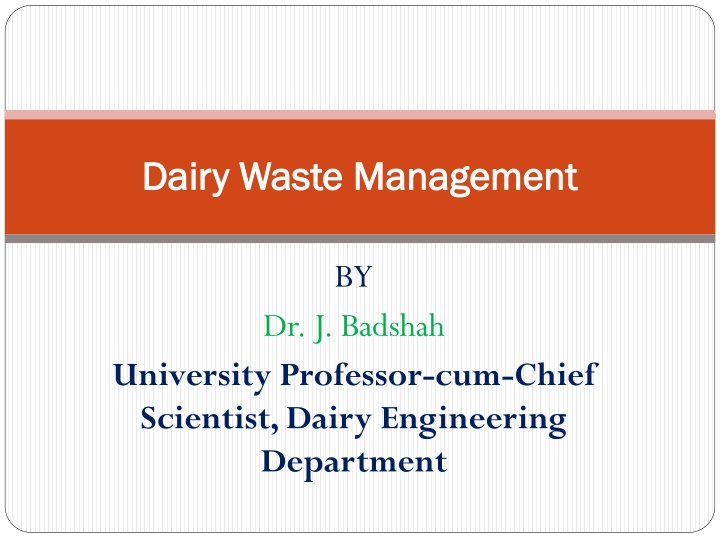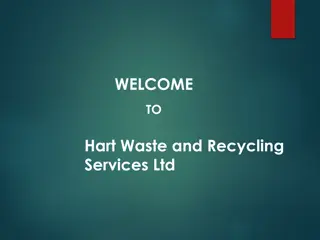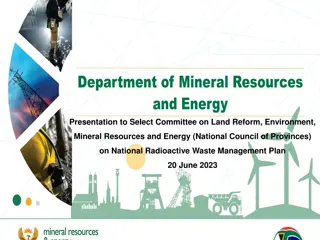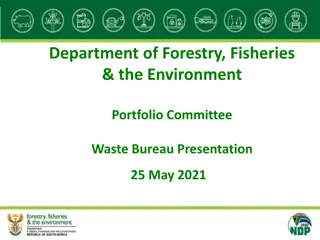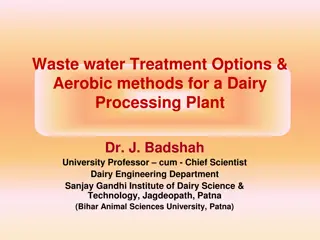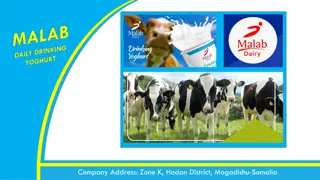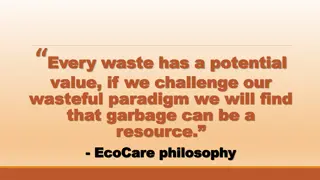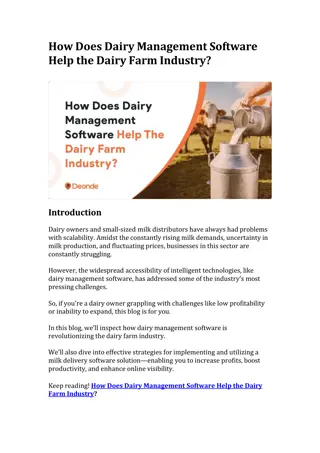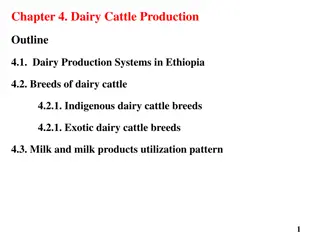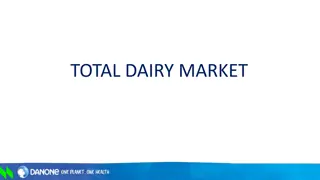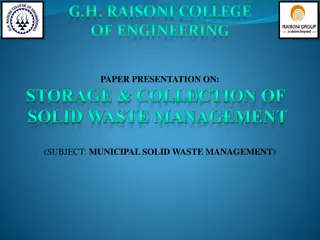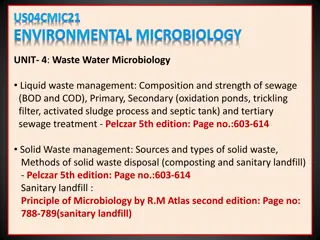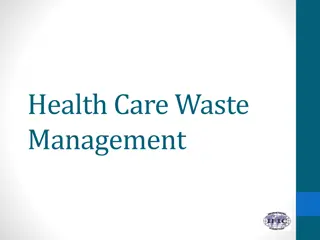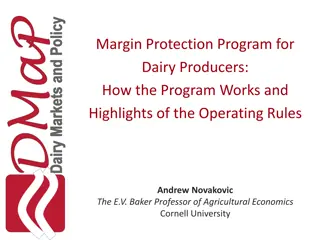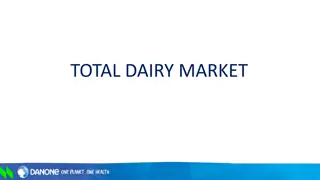Dairy Waste Management in Food Processing Plants
In the dairy industry, there are various types of waste including solid, liquid, oily, and gaseous wastes. The sources of waste range from manual cleaning to unavoidable losses. Effective waste management strategies can help prevent avoidable losses such as deliberate discharge of materials and minimize unavoidable losses like entrainment losses in evaporators. Reusing by-products can also enhance efficiency and reduce waste generation.
Download Presentation

Please find below an Image/Link to download the presentation.
The content on the website is provided AS IS for your information and personal use only. It may not be sold, licensed, or shared on other websites without obtaining consent from the author.If you encounter any issues during the download, it is possible that the publisher has removed the file from their server.
You are allowed to download the files provided on this website for personal or commercial use, subject to the condition that they are used lawfully. All files are the property of their respective owners.
The content on the website is provided AS IS for your information and personal use only. It may not be sold, licensed, or shared on other websites without obtaining consent from the author.
E N D
Presentation Transcript
Dairy Waste Management Dairy Waste Management BY Dr. J. Badshah University Professor-cum-Chief Scientist, Dairy Engineering Department
Waste Management in Dairy Industry Waste Management in Dairy Industry Introduction Types of Waste water in Dairy and Food Processing Plants I. Depending on the Forms of wastes i. Solid Waste ii. Liquid Waste iii. Oily Waste iv. Gaseous Wastes/Water Vapours
Waste Depending on the sources Waste Depending on the sources Depending on the Sources i. Manual Cleaning of storage tanks and equipments ii. Floor/drainage cleaning iii. CIP Cleaning of Equipments iv. Wastes from utilities like water tanks, Boilers & Refrigeration systems v. Wastes from workshops, offices and gardens etc. vi. Wastes from laboratories and packaging sections vii. Unavoidable wastes from Heat exchnagers, drum dryers, spray dryers, condensers, compressors etc.
Waste Management in Dairy Industry: Waste Management in Dairy Industry: Avoidable Losses Avoidable Losses Depending on Avoidable or Unavoidable Losses Avoidable Losses : Deliberate discharge of unwanted materials such as milk, whey, waste water, solid powders etc. i. Leaking valves,pipes and joints etc. ii. Overflows and spills iii. Leakages and spills during processing,handling and storage iv. Losses due to not using hot water (<65 C) for viscous and sticky products such as cream, butter, ghee etc. for cleaning and recovery.
Waste Management in Dairy Industry : Unavoidable Losses Waste Management in Dairy Industry : Unavoidable Losses Unavoidable Losses i. Entrainment Losses in evaporators ii. Stack losses in spray dryers iii. Surface deposits in Heat exchangers and drum dryers Ways to prevent unavoidable losses and enhancing efficiencies i. Control of levels of milk in vapour separators ii. Control of atomization and spray drying process to reduce stack losses and to use powder recovery efficient systems such as wet scrubbers,bag filters and collecting chamber etc. iii. Use of proper CIP cycle in processing equipments to avoid surface deposits & milk stones iv. Use of proper flow rates and temperature of steam condensation
Wastes depending upon reuse potentials Wastes depending upon reuse potentials Losses due to making predominant by-products into low value animal feed/fertilizer or dumping as waste. Rather it should be benefited by converting into value added products. Whey to value added products such as whey poder, whey protein concentrate and whey drinks etc. Butter milk to butter milk powder or butter milk salted drinks Skim milk to skim milk powder or UF protein concentrate and lactose recovery.
Waste Minimization and recycle systems Waste Minimization and recycle systems Solid waste reduction in all processes i. Stack losses of minute powder particles ii. Solid ghee residues iii. Film (LDPE) losses in packaging section iv. Ash from boiler if solid fuel is used v. Waste generated by adverse events such as explosions, fire in uncontrolled processes and damaged and nonfunctional equipments/machineries. Liquid waste reductions in CIP, Manual cleaning and use of water Recycling water and chemicals Recovery and reuse of cleaning solution from first use Recovery and reuse of spilled raw materials, off-spec materials and products.
Instrumentations, Process Controls & Automations Instrumentations, Process Controls & Automations Losses depending upon the design, configuration and range of manufacturing technologies in use and their thermal and handling efficiencies. Losses due to low efficiencies of process monitoring, recording and control system Losses due to non availability of plant operation and procedures interlock /alarms to enhance efficiencies The non availability/non functionality of automated operation in CIP systems,Dryers,Pasteurizers plants Improper training and awareness of operator or poor commitment and efficiency of operator and laborers Improper routine and preventive maintenance Improper inventory maintenance Lack of managerial and leadership qualities to control automations and instrumentations as per the tune of running cycles of equipments
